Pogonomyrmex maricopa Harvester Ants and Asagena (Steatoda) Spider
An observation of an ant-eating spider, and Pogonoyrmex maricoa in Central Arizona
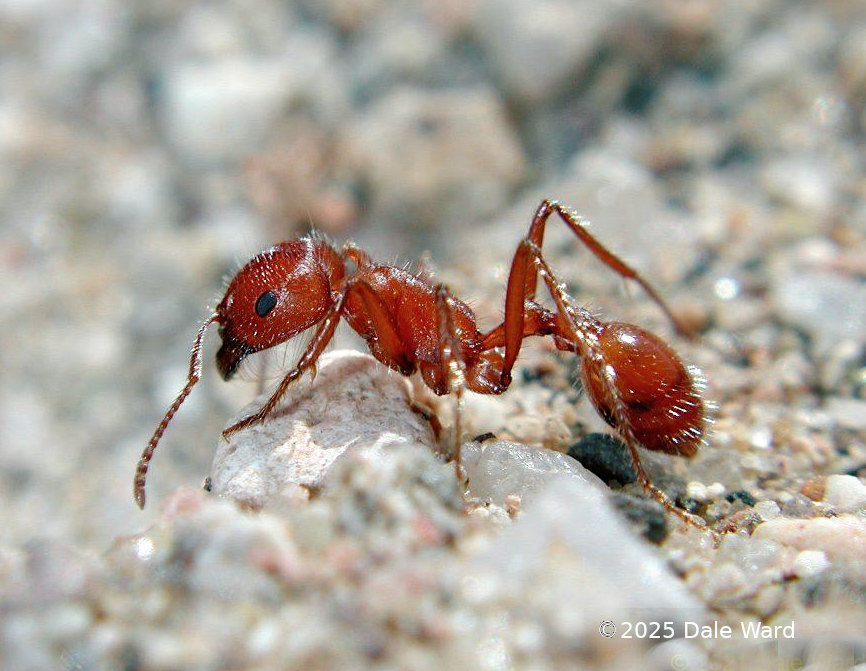 _Pogonomyrmex maricopa_ from the dry bed of the Agua Fria River
_Pogonomyrmex maricopa_ from the dry bed of the Agua Fria River
These photos are from an anting trip I made out to the dry bed of the Agua Fria River on March 2, 2002.
I’d taken my dogs - a Whippet and a Jack Russell Terrier - for company.
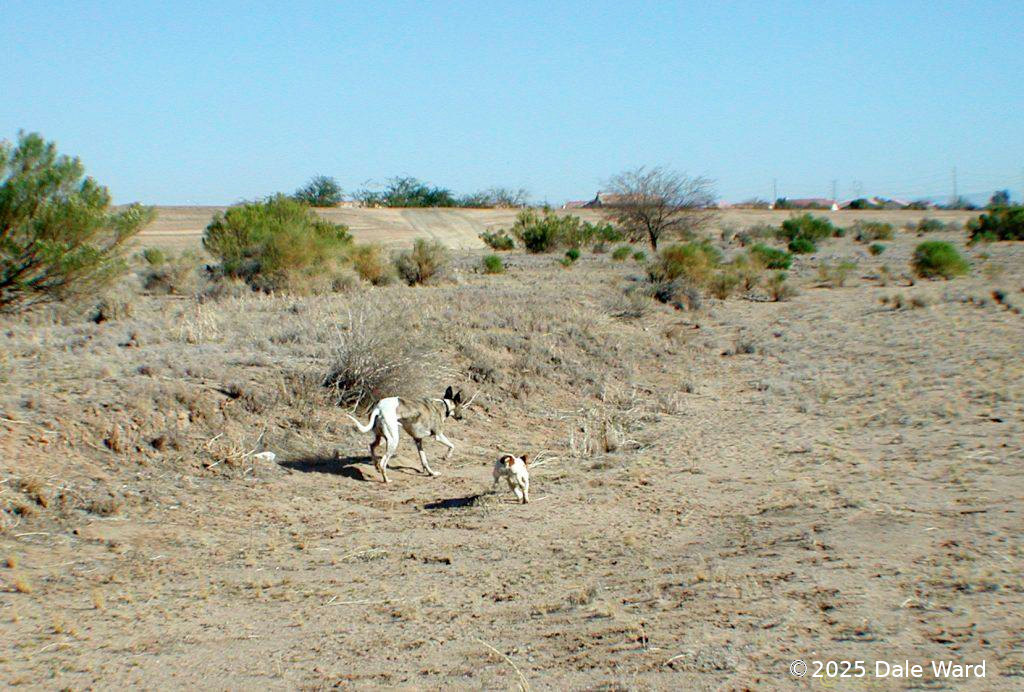 The Jack the Whippet and Bell the JRT running in the dry bed of the Agua Fria River. I was looking for the Harvester Ant nests, but I think they were looking for rabbits.
The Jack the Whippet and Bell the JRT running in the dry bed of the Agua Fria River. I was looking for the Harvester Ant nests, but I think they were looking for rabbits.
We were looking for Pogonomyrmex Maricopa - the Maricopa Harvester Ant. And we found lots of them. They were big nests, the cleared area was maybe 15 feet in diameter. The problem, though, was that the ants were so numerous and aggressive that I had problems getting close enough to the nests without getting stung. And if I did get close to an ant by itself, it was running too quickly for me to focus the camera on it.
Then I found a nest that was behaving differently. The ants were not running around. Rather, they were all clustered in the nest entrance.
I looked more closely. There was a web spun over the entrance, and there was a Pogonomyrmex maricopa worker trapped in the web. She wasn’t moving, I could not tell if the ant was dead or alive.
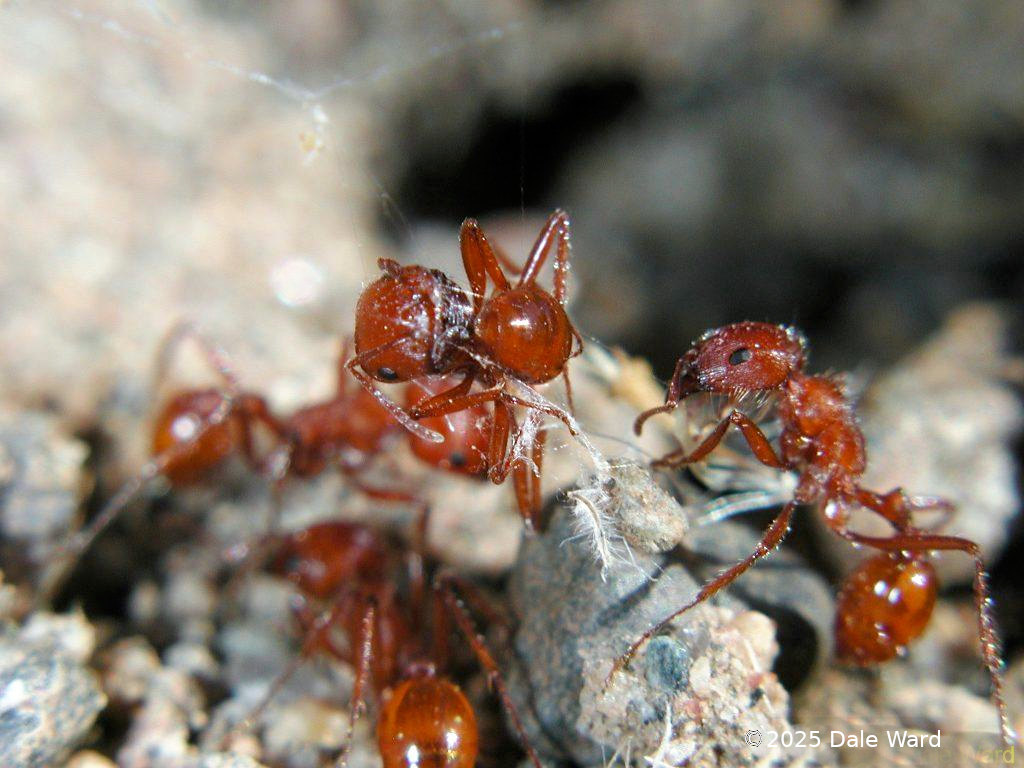 _Pogonomyrmex maricopa_ workers. One in the center is trapped in a spider web. The worker on the right will tentatively try to free the web-entangled worker in the center. This is right at the nest entrance - you can see the entrance in the background, just above the entangled worker.
_Pogonomyrmex maricopa_ workers. One in the center is trapped in a spider web. The worker on the right will tentatively try to free the web-entangled worker in the center. This is right at the nest entrance - you can see the entrance in the background, just above the entangled worker.
One of the other worker ants slowly and deliberately came over to the trapped worker and bit at the web. She also used her antennae to tap the trapped worker.
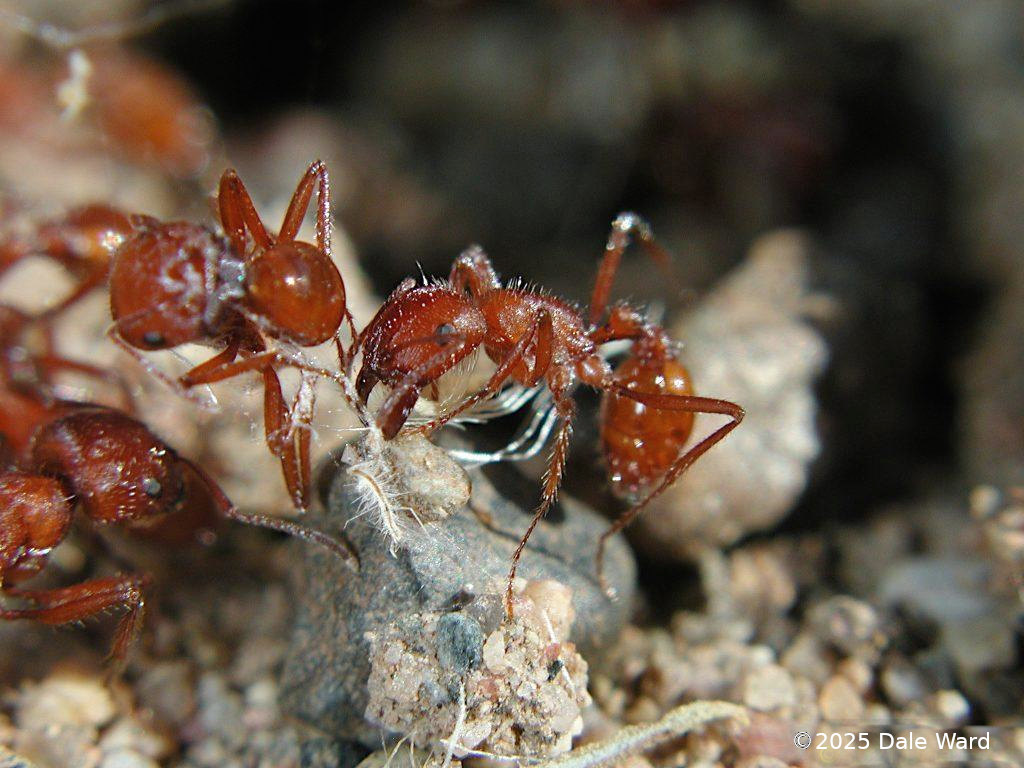 _Pogonomyrmex maricopa_ worker begins exploring the web and the entangled worker.
_Pogonomyrmex maricopa_ worker begins exploring the web and the entangled worker.
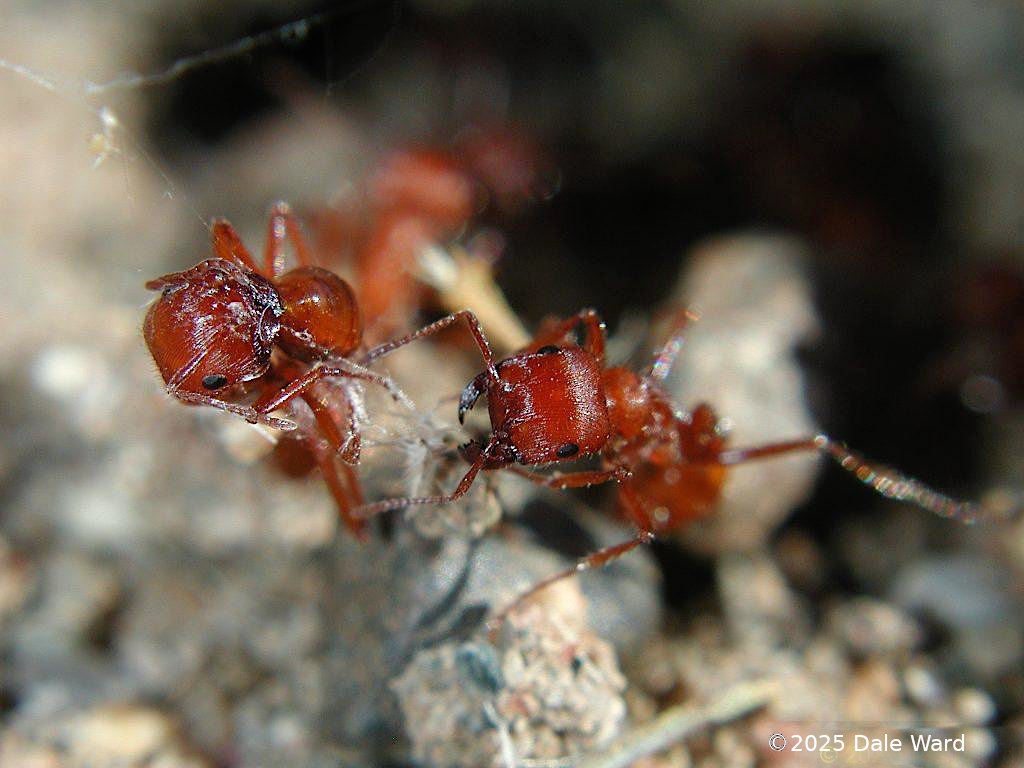 _Pogonomyrmex maricopa_ antennating the entangled worker.
_Pogonomyrmex maricopa_ antennating the entangled worker.
Then a spider appeared in the web and ran over to the trapped ant. I’m not sure where the spider came from, whether it was a hiding place in the web or from the ground.
The Harvester Ant that was trying to free the trapped ant ran away.
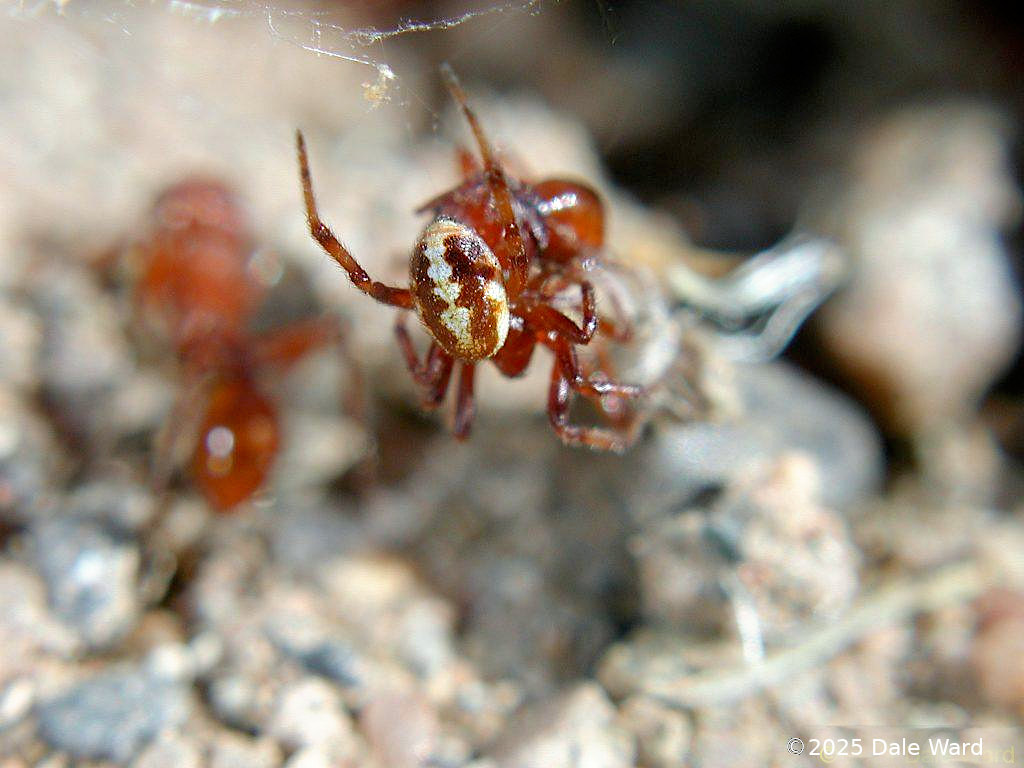 The spider appears - I’m not sure where he came from. The _Pogonomyrmex maricopa_ worker that was attempting to cut the web left when the spider appeared.
The spider appears - I’m not sure where he came from. The _Pogonomyrmex maricopa_ worker that was attempting to cut the web left when the spider appeared.
The spider moved his legs over the ant as though feeling his victim. Then the spider began to wrap the ant in more silk.
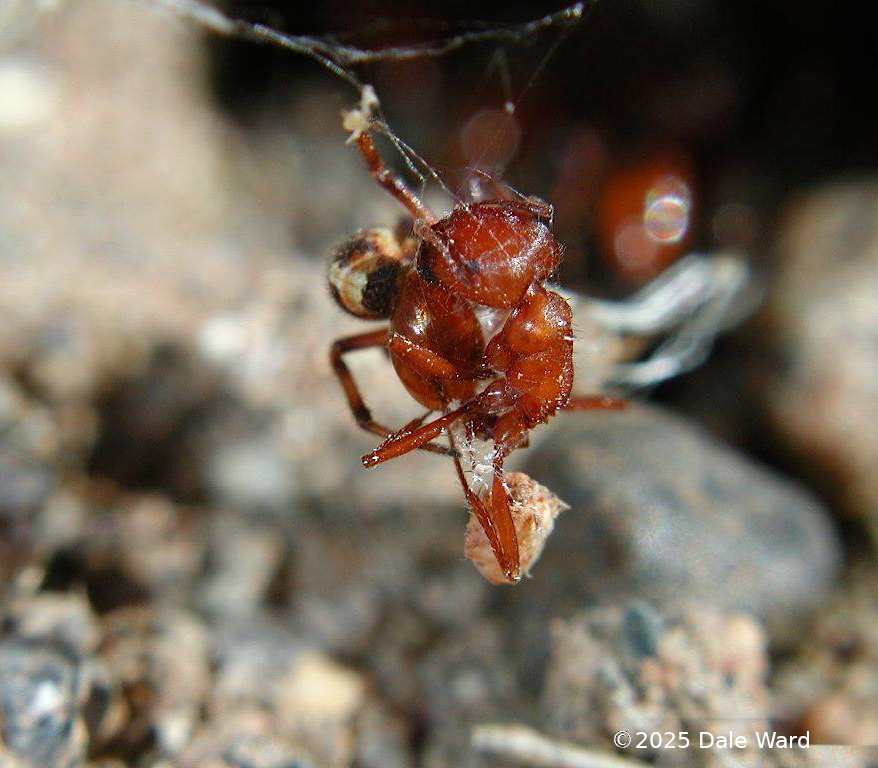 Spider wraps the ant with more web.
Spider wraps the ant with more web.
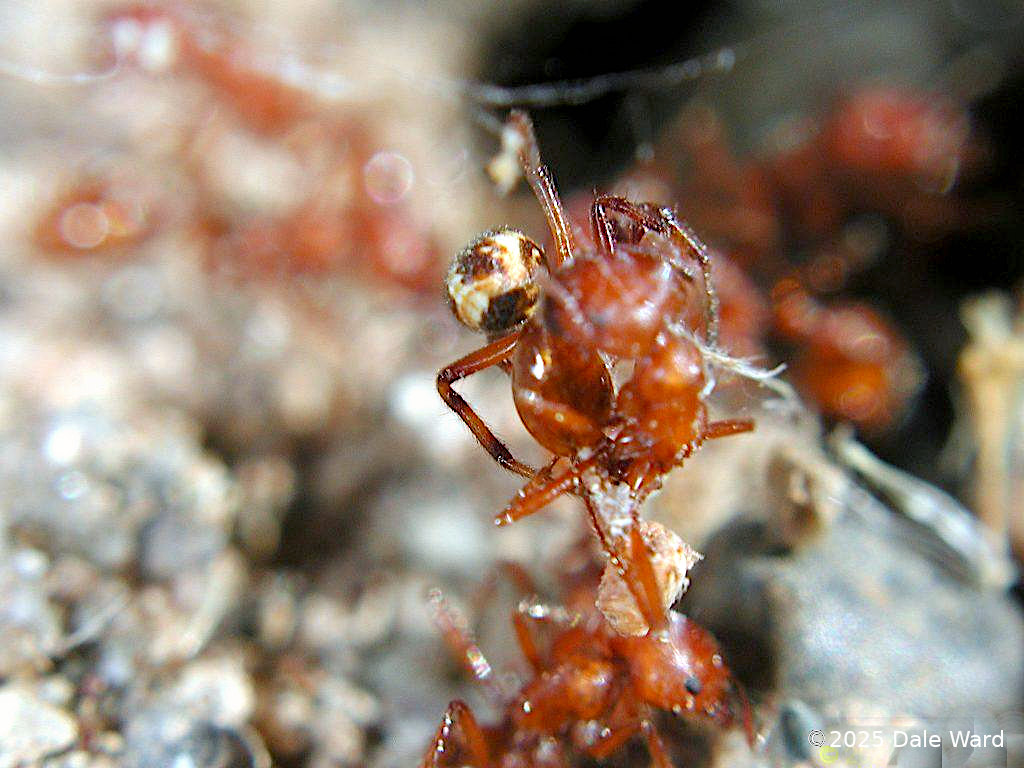 Spider continues to wrap the worker in web. You can see a cluster of _Pogonomyrmex maricopa_ in the entrance to the nest, just in the background.
Spider continues to wrap the worker in web. You can see a cluster of _Pogonomyrmex maricopa_ in the entrance to the nest, just in the background.
The spider moved away from the ant after wrapping for a while. I could clearly see spider’s enlarged pedipalps, indicating that this was a male.
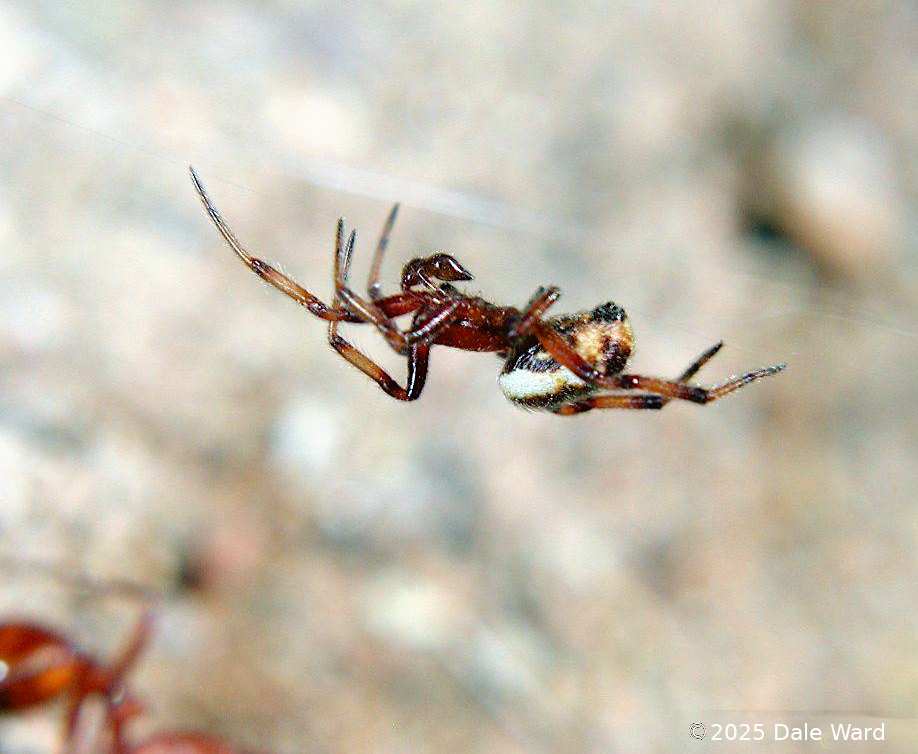 Profile of the spider. He’s finished wrapping the ant. He’s clearly a male - note the enlarged pedipalps.
Profile of the spider. He’s finished wrapping the ant. He’s clearly a male - note the enlarged pedipalps.
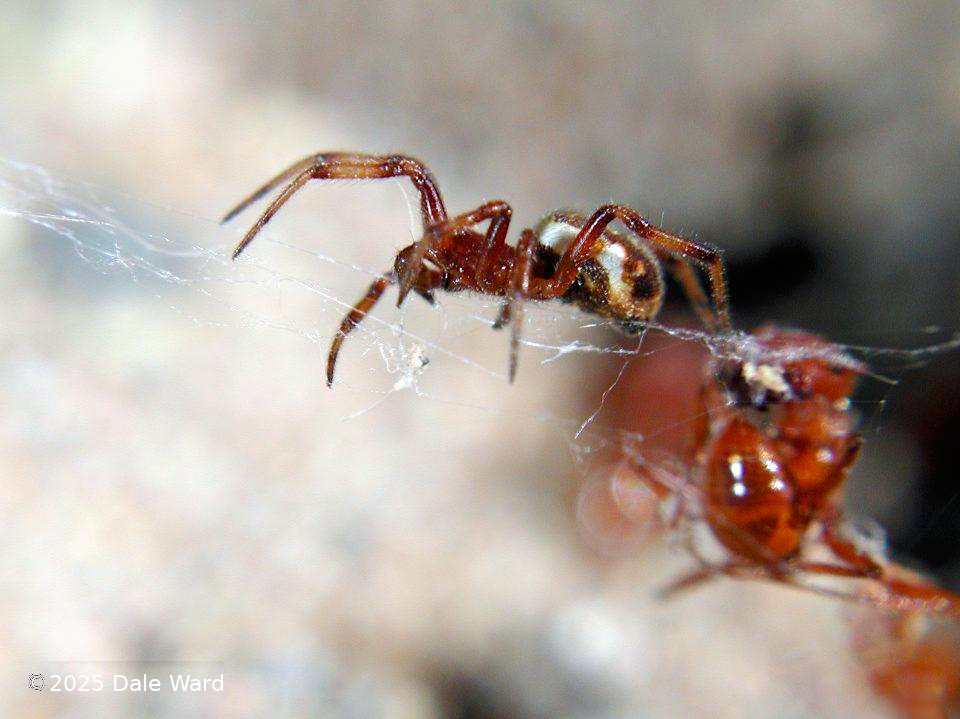 Spider resting on web, with captured ant and the nest entrance in the background.
Spider resting on web, with captured ant and the nest entrance in the background.
After a short time, the spider returned to the trapped ant. He bit the ant at the base of one of her legs.
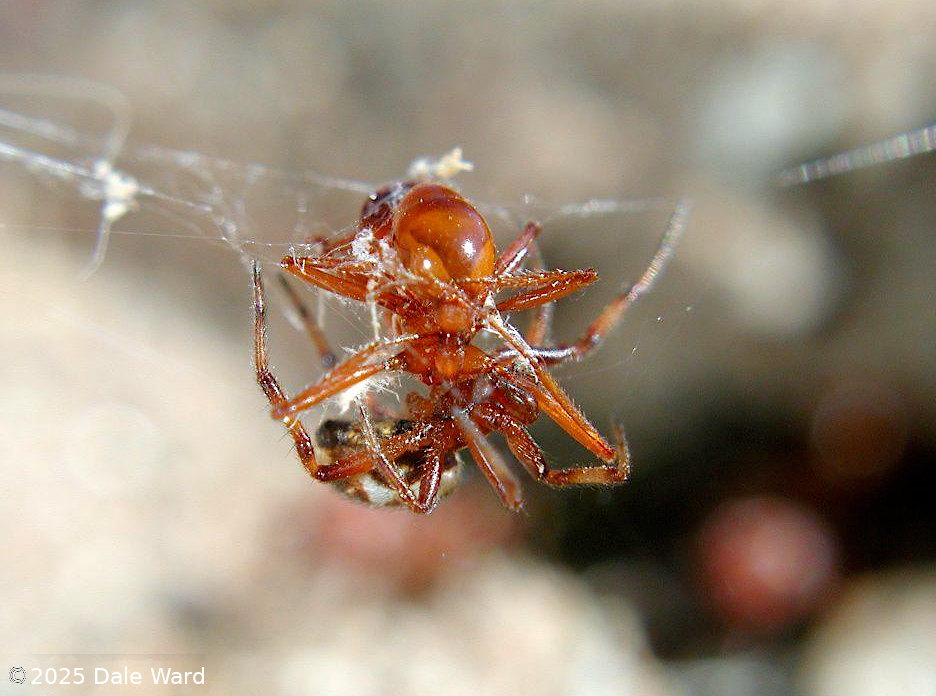 Spider comes back to the trapped ant. He is biting the ant at the base of her leg - either feeding on the ant or injecting more venom.
Spider comes back to the trapped ant. He is biting the ant at the base of her leg - either feeding on the ant or injecting more venom.
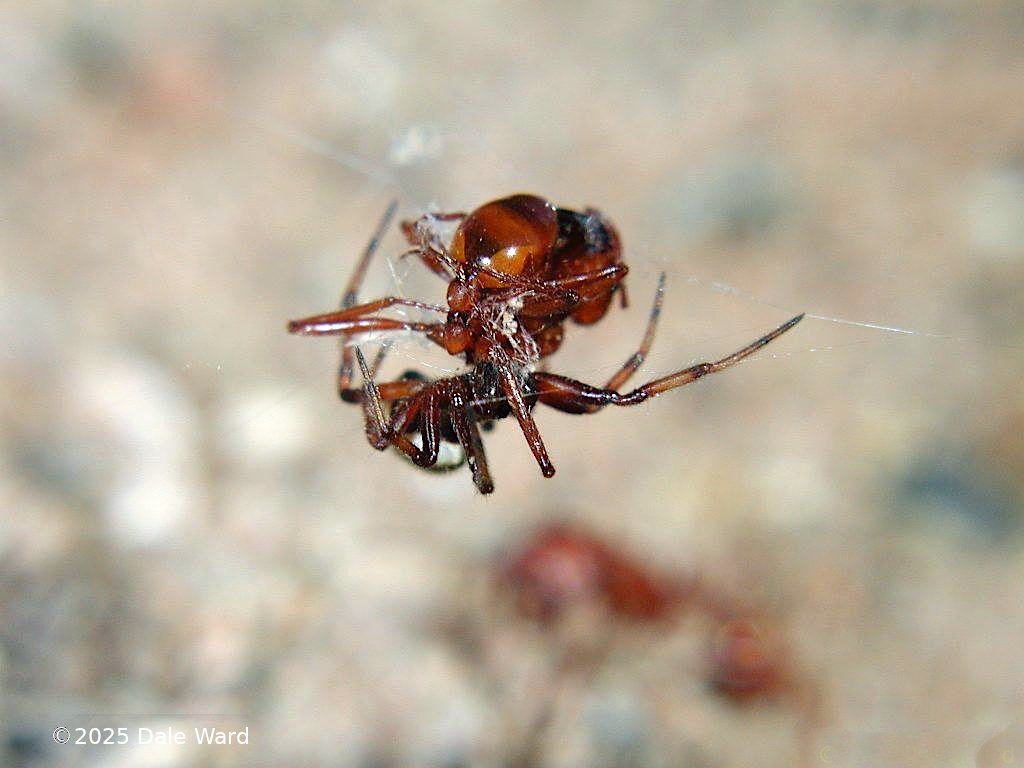 Spider continues biting the ant at the base of the leg.
Spider continues biting the ant at the base of the leg.
The spider stayed in that position until I left the area. I’m assuming that he was feeding.
For many years I assumed that this spider was a juvenile Black Widow Spider. After reading a couple of papers by Dr. Hölldobler, though, I wondered if perhaps the spider I’d seen had been a species of Steatoda. Those are spiders which may or may not be obligate predators of ants - but they certainly seem to specialize on ants. That would be interesting…so I set about trying to identify the spider.
A word of warning - be careful when falling into the rabbit hole that is spider taxonomy. They are hard to identify, and their taxonomy always seems to be in question. I guess I should have called the “rabbit hole” of spider taxonomy a “spider hole”, now that I think about it…
Long story short, I believe this spider is indeed a species in the Steatoda fulva group.
That group has since been moved to the genus Asagena. I had a hard time using the various keys beyond that point.
I strongly suspect that the spider is Asagena pulcher, a member of the fulva group.
Addendum - While going through my old photos, I found this picture from 2001-04-21.
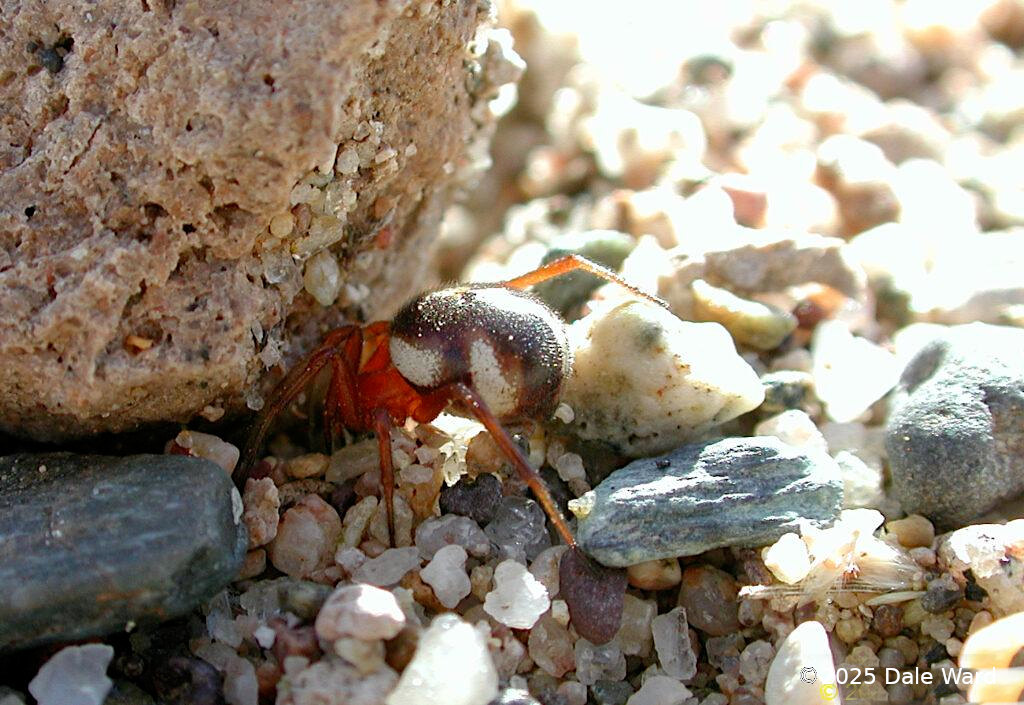 _Asagena (pulcher?)_ spider, on the dry bed of the Agua Fria River, 2001-04-21.
_Asagena (pulcher?)_ spider, on the dry bed of the Agua Fria River, 2001-04-21.
I think it’s another Asagena spider. It seemed to be just ‘wandering around’ the bed of the river. That struck me as odd at the time. I would have expected the spider to have lived a sedentary existence in its web, given the rotundity of its body form. In retrospect, the observation made sense, though.
I’ve read that Asagena (Steatoda) webs have a very limited lifespan because the ants abandon a nest entrance or shutdown foraging if there is a spider present. That means the spiders would need to move their nests regularly, hopefully finding ‘naive’ ant nests.
I wonder if this spider was out looking for a new ant nest to prey upon?
Sources:
Bugguide.net’s Asagena Spider page
Gretsch, Willis John. 1960. The fulva group of the spider genus Steatoda (Araneae, Theridiidae). American Museum novitates ; no. 1982. American Museum Novitates. Number 1982. January 20, 1960.
Hölldobler, Bert. 1970. Steatoda fulva (Theridiidae), a Spider That Feeds on Harvester Ants. Psyche: A Jornal of Entomology 77(2).
Kwapich, Christina L. and Hölldobler, Bert. 2019. Destruction of Spiderwebs and Rescue of Ensnared Nestmates by a Granivorous Desert Ant (Veromessor pergandei). The American Naturalist. Volume 194, Number 3. September 2019.
Levi, Herbert W. 1962. The Spider Genera Steatoda and Enoplognatha in America (Aranaeae, Theridiidae). Psyche: A Journal of Entomology. 69(1).
Levi, Herbert W. 1959. Problems in the Spider Genus Steatoda (Theridiidae). Systemic Zoology. Vol. 8, No. 2 (June 1959)..*